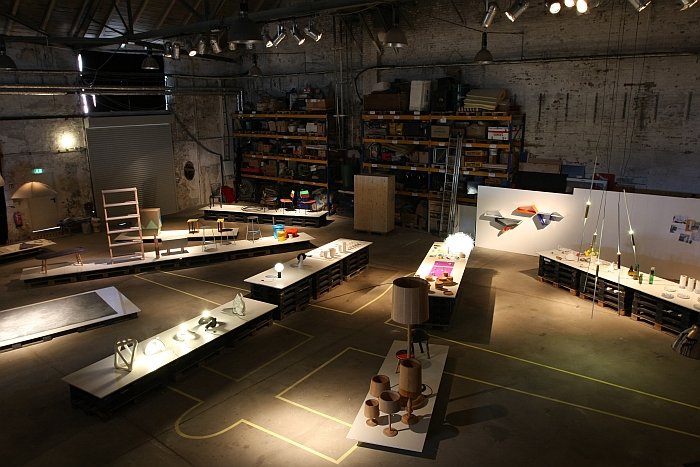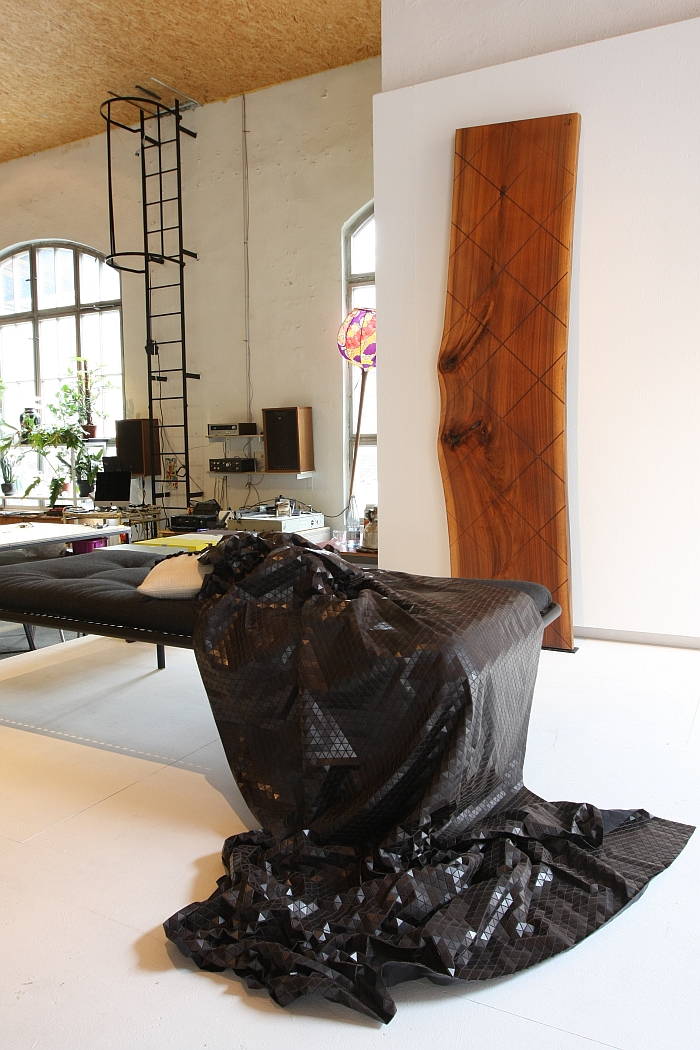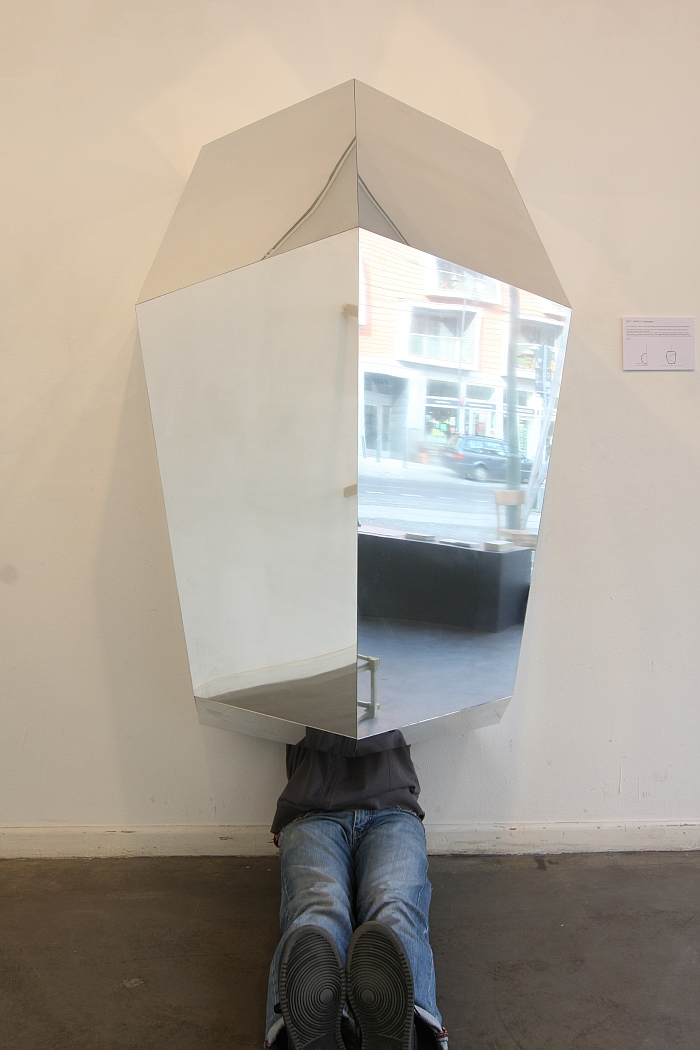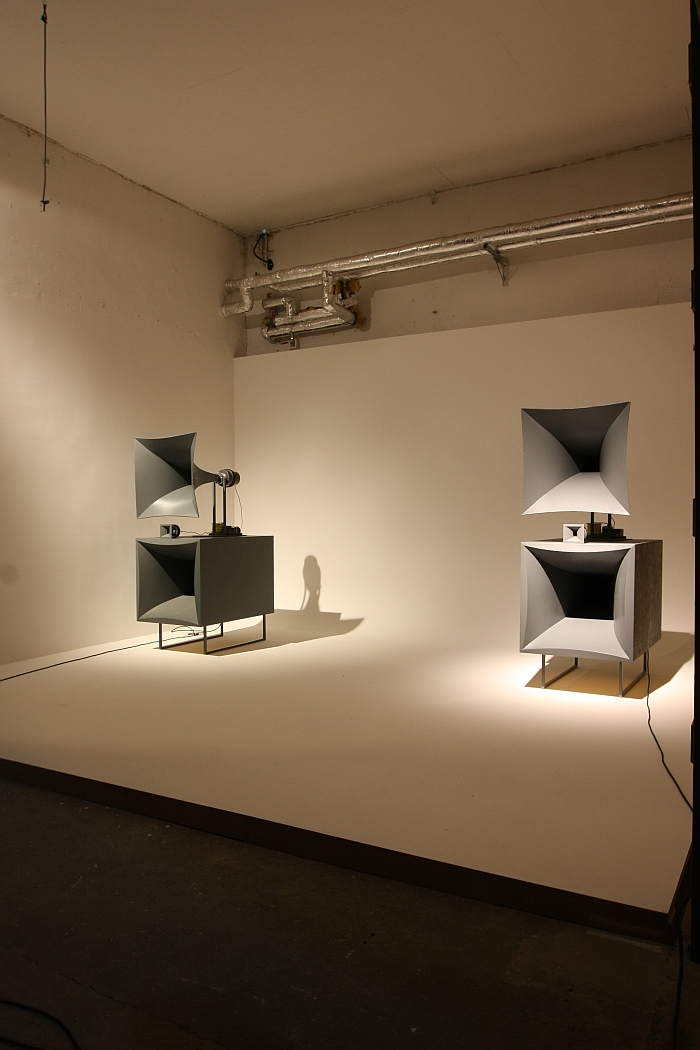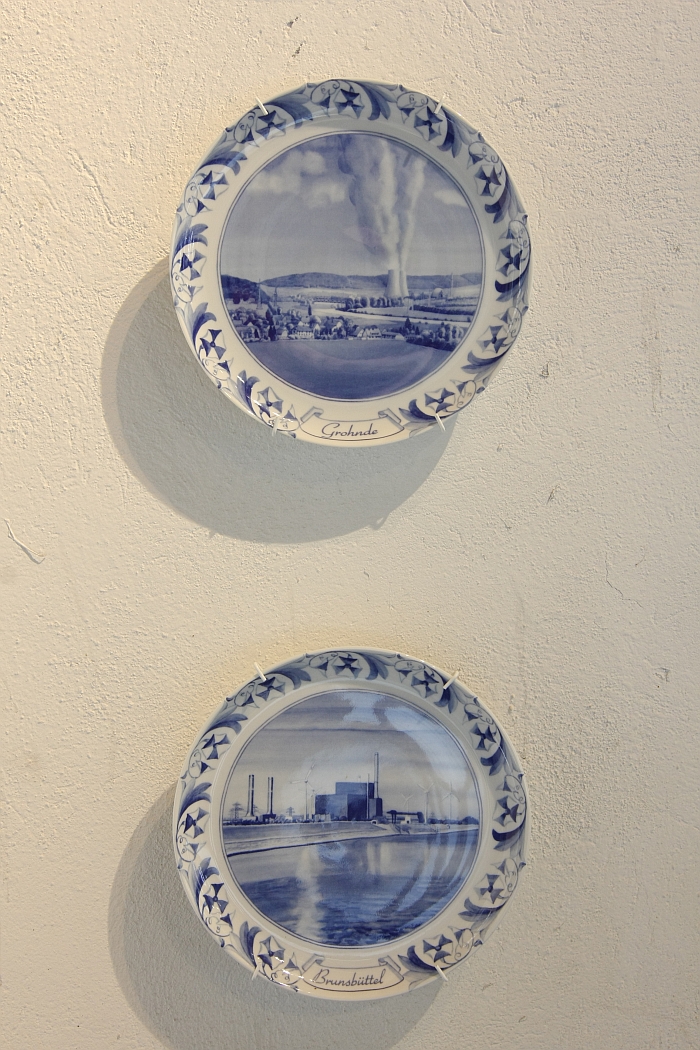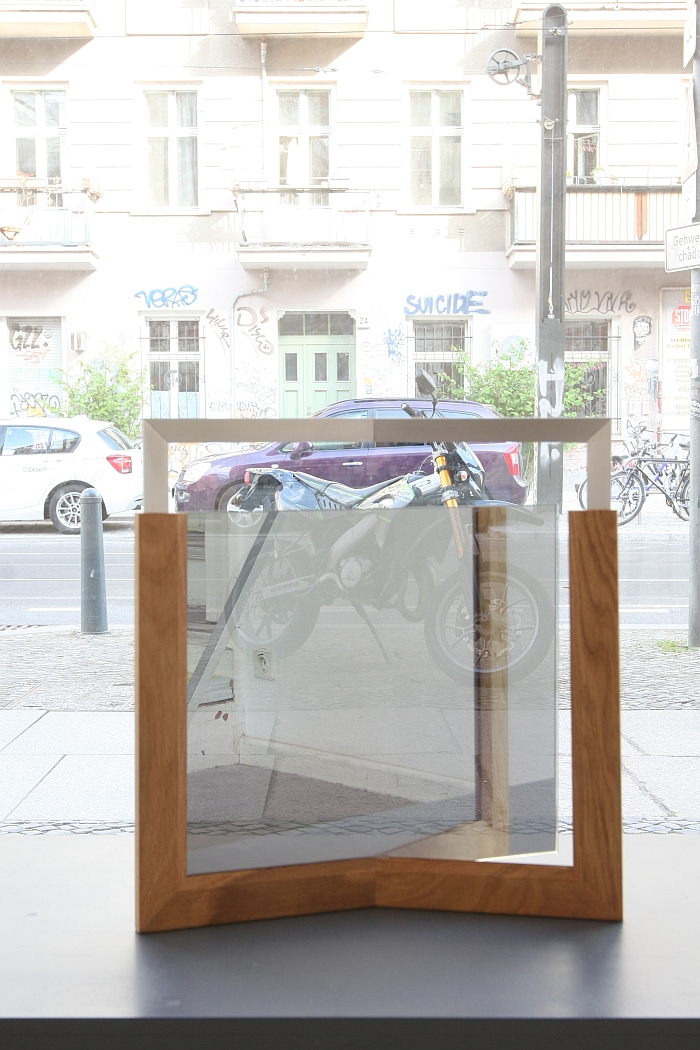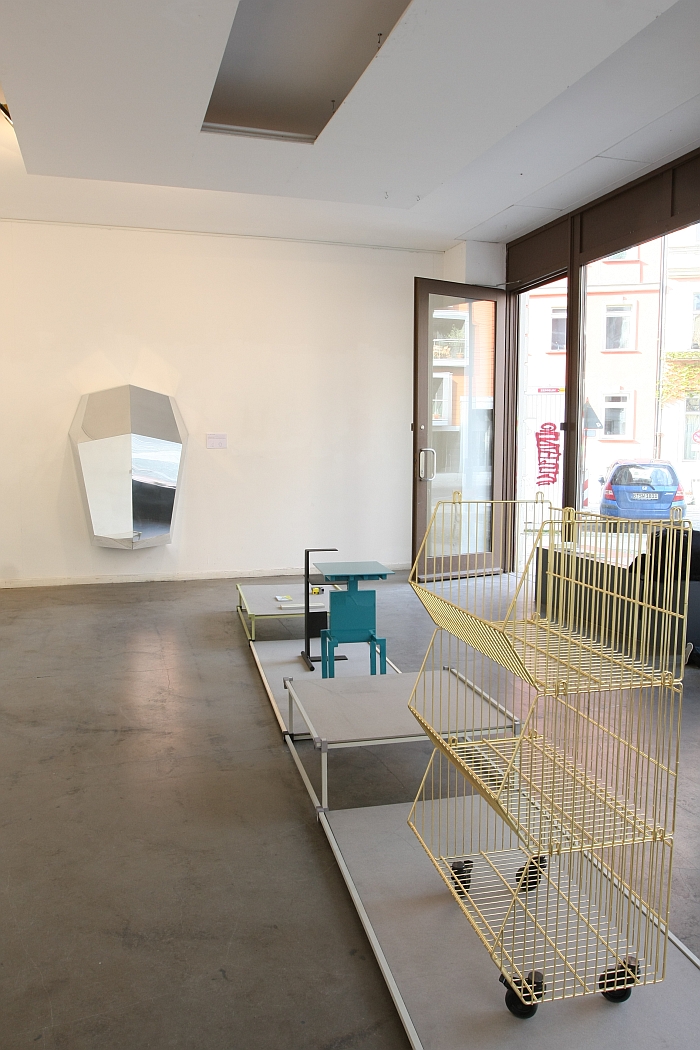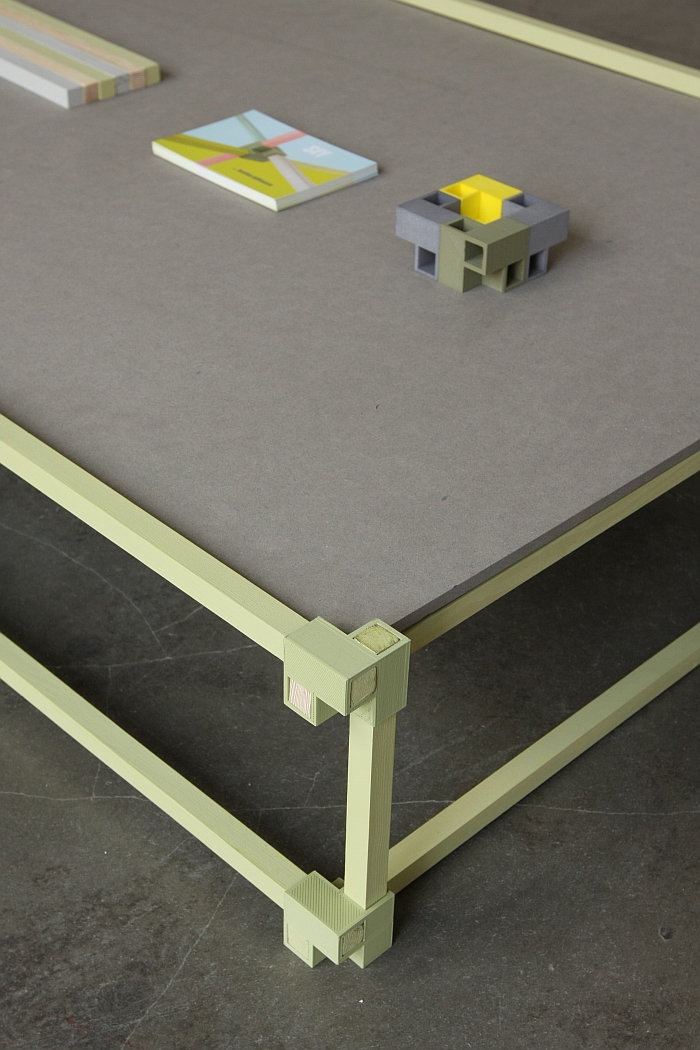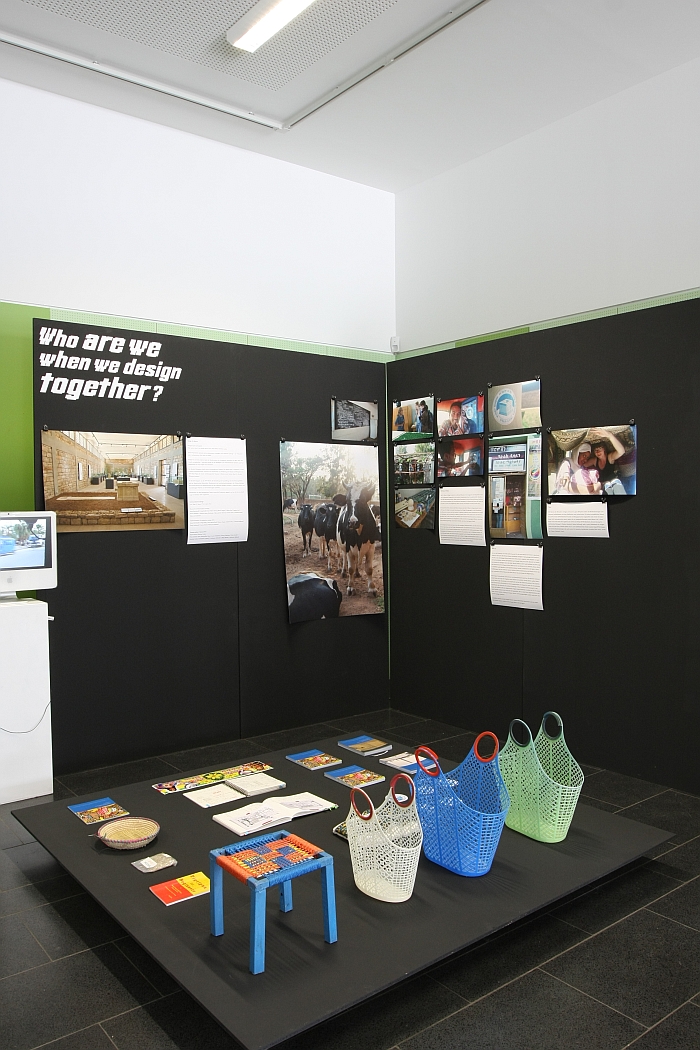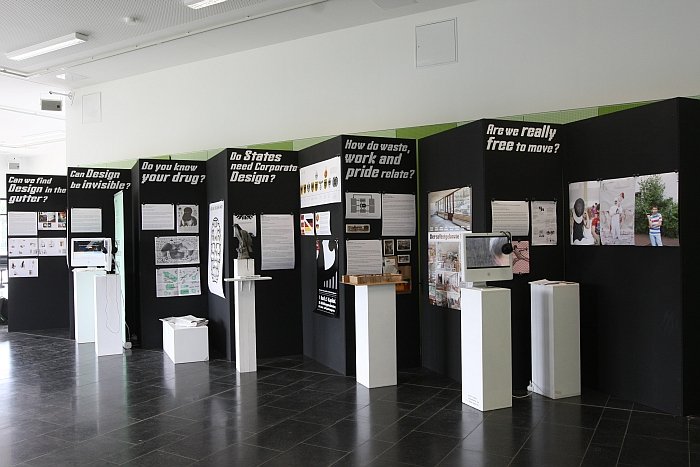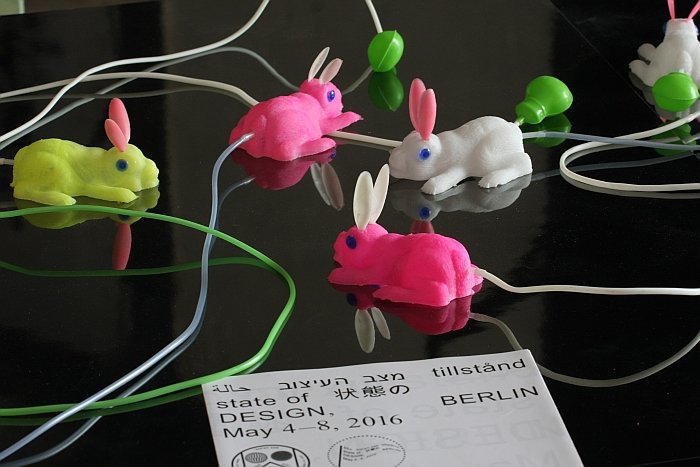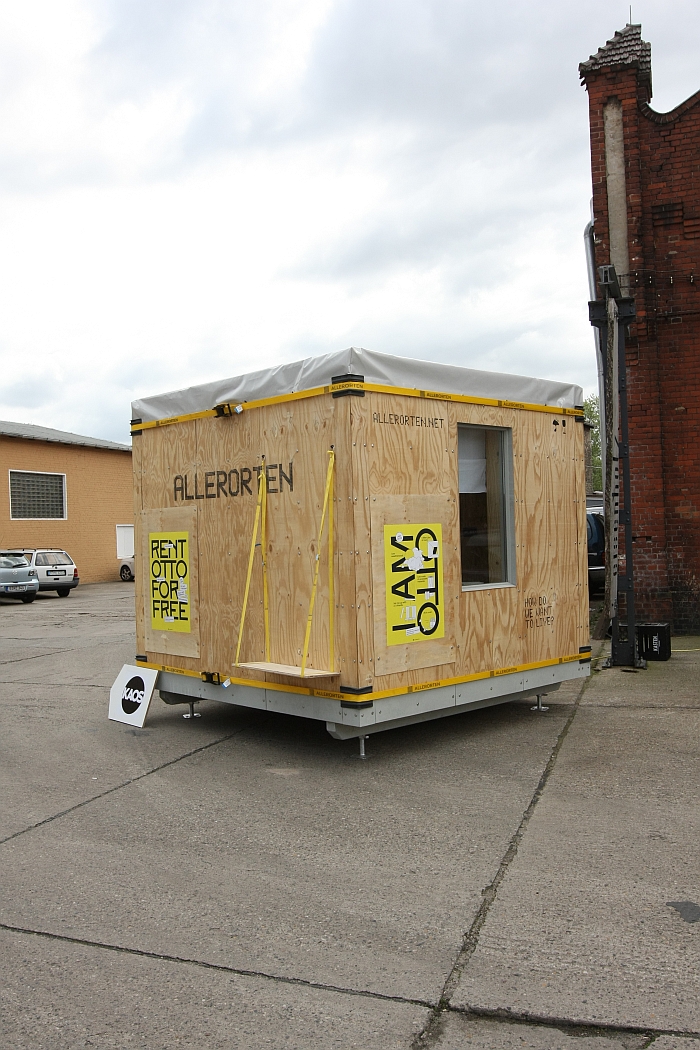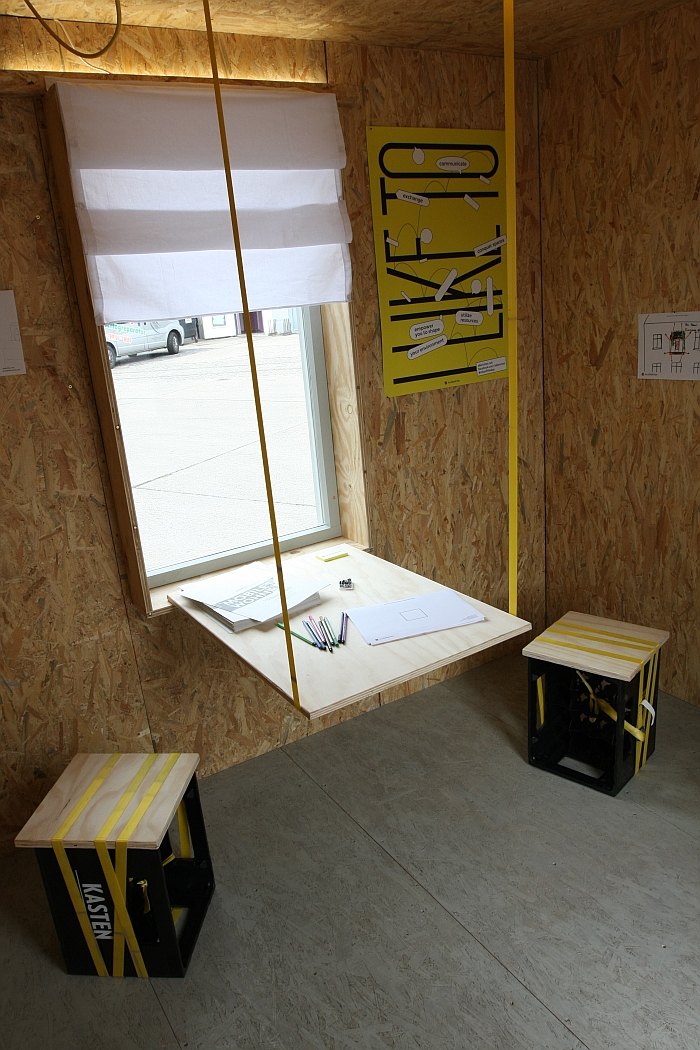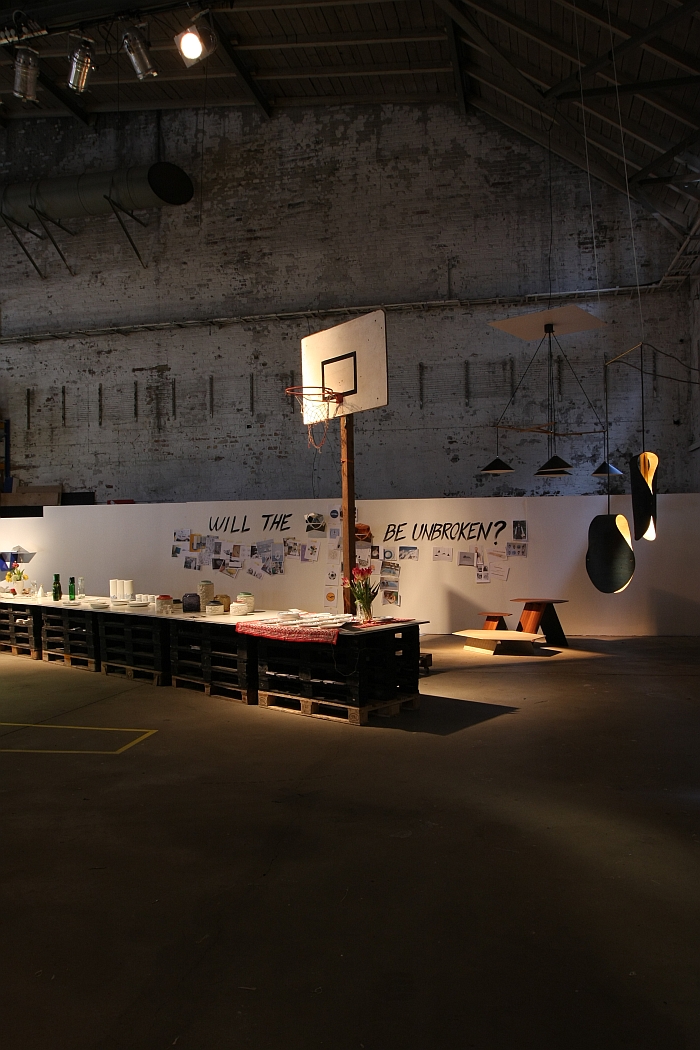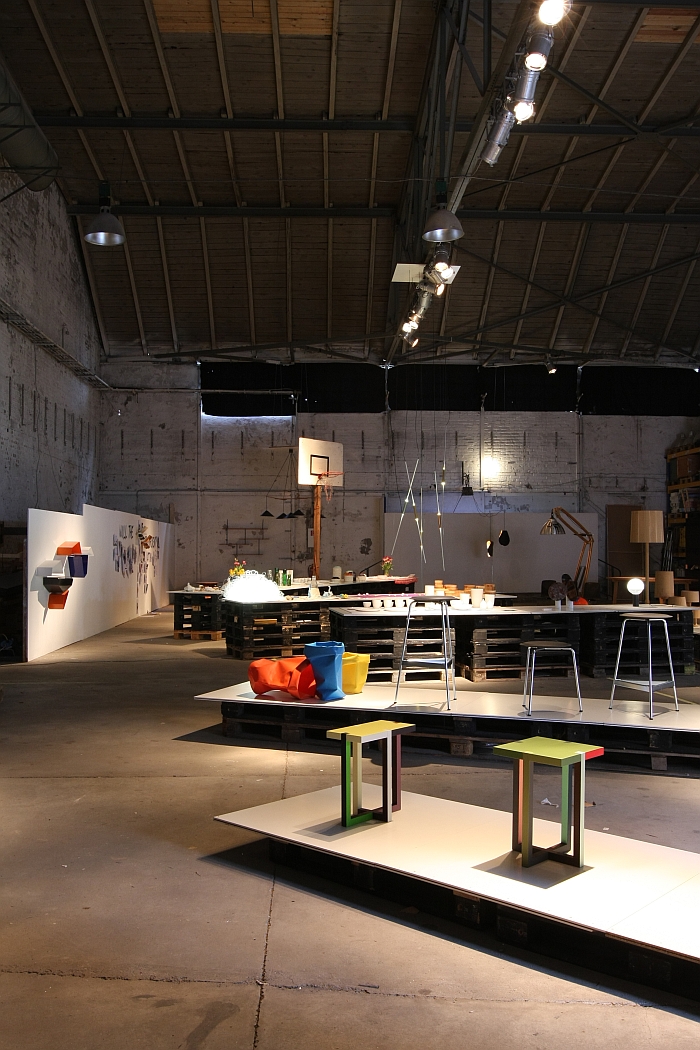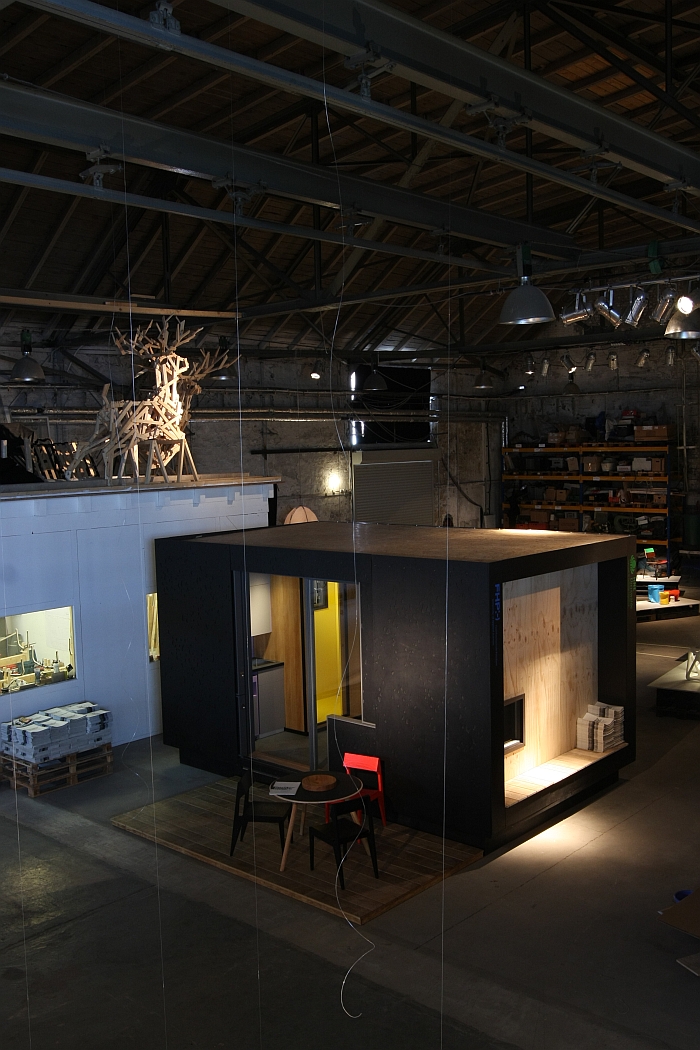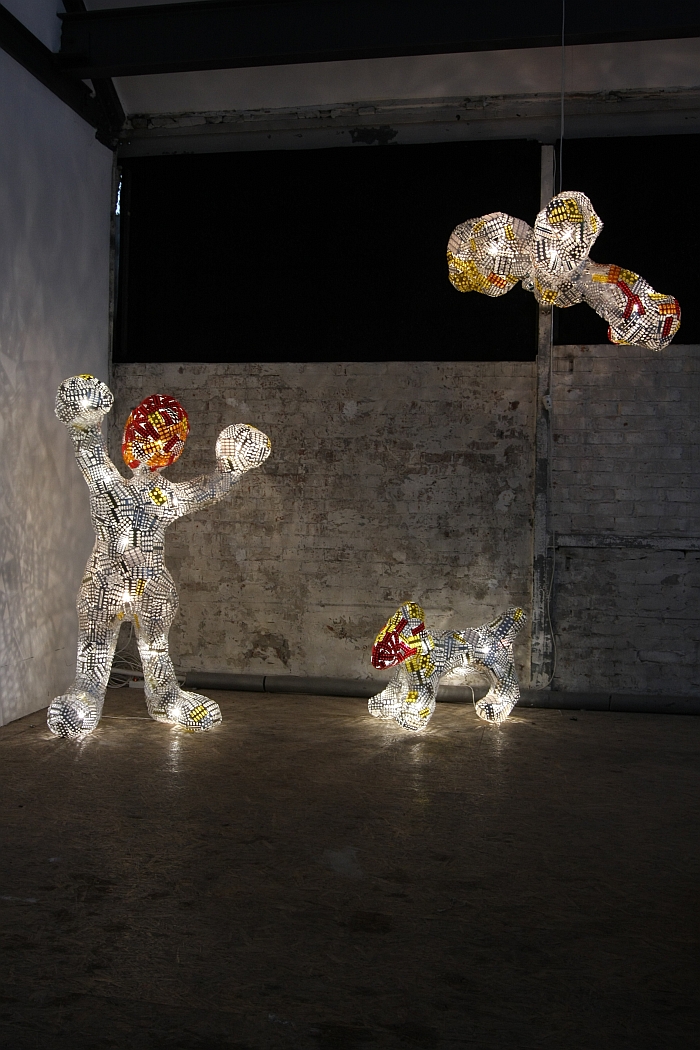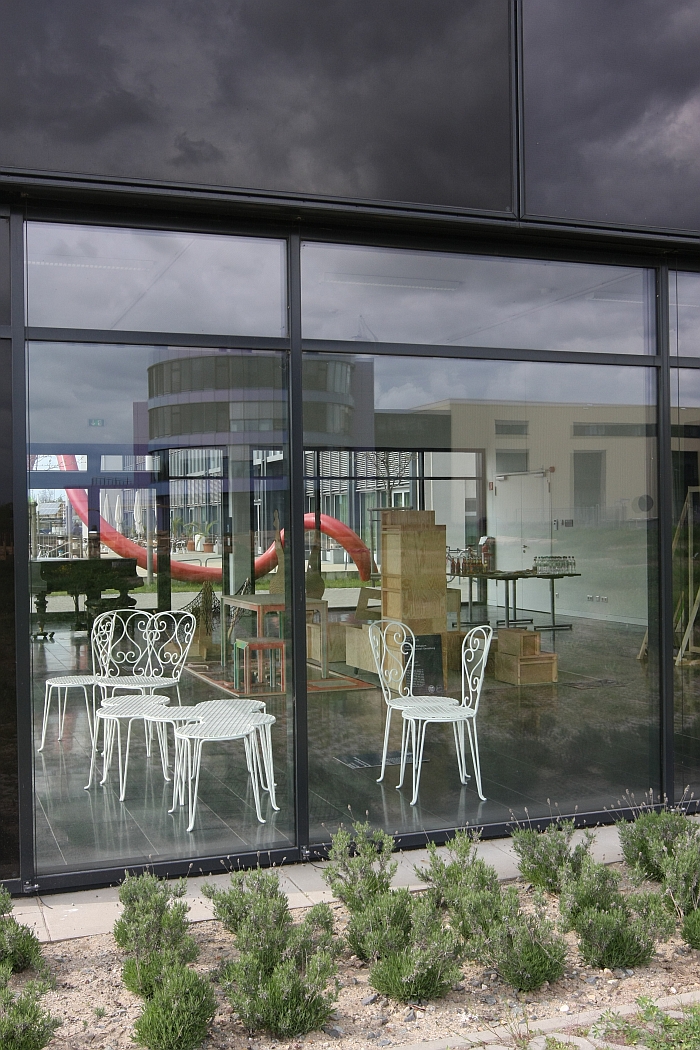The clearest sign that that things are changing in Berlin-Oberschöneweide is without question the new vegan Vietnamese restaurant on the corner of Edisonstrasse and Wilhelminenhofstrasse.* For all unfamiliar with Oberschöneweide, which we presume is everyone, the district in south eastern Berlin was never a particularly happy vegan hunting ground; yet as much as being a new culinary alternative the vegan Vietnamese restaurant is much more a sign that a new clientèle is active in the area, that the times they are changing in Oberschöneweide, that something is stirring in Oberschöneweide. Or perhaps better put awakening; for in the early 20th century through the presence of the turbine and electrical goods manufacturer AEG, Oberschöneweide was one of Berlin's industrial and creative centres. A fact attested to by the many architectural projects by Peter Behrens for AEG still to be found in the area; and not just the monumental industrial buildings along the River Spree, also the much more discrete housing estates realised in the 1920s for AEG workers remind of the area's golden years. That the State of Design Berlin festival chose Oberschöneweide for one of their main bases has however less to do with Oberschöneweide's historic creative tradition however as its more recent creative tradition.
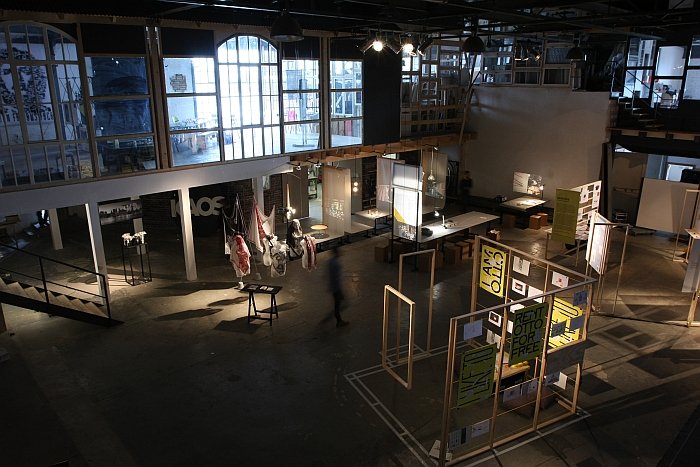
Conceived as a design festival which focusses on the cultural rather than the purely commercial aspects of design, an event which takes design away from trade fairs and presents it as a subject of debate, discussions and reflection, State of Design Berlin was initiated by Alexandra Klatt and Max Borka and for its inaugural edition is largely based in the KAOS co-working space in Oberschöneweide.
Established in 2013 KAOS describes itself as a "place for collaborative working amongst creatives", and from an original search by three designers for a suitable location to establish a studio has grown to a co-working space with workshops, workspaces and office space used by some 50 designers and creatives of various genres.
For State of Design 2016 KAOS is playing host to numerous showcases including the Jerusalem based Bezalel Academy of Arts and Design's project "Jerusalem Berlin Bridge" which investigates the, relatively, large numbers of Israelis currently relocating to Berlin, the micro-architecture projects Schrankhaus and Otto Allerorten by students of the Fachhochschule Potsdam and "Something from Nothing", an exhibition which, and as already noted in our previous discussion with Max Borka, is in many respects the sub-title and one of the central themes of the festival. Presenting projects which explain that design isn't necessarily only about lifestyle, show or profit, but can be much more essential, more cultural, social, and for all challenging "Something from Nothing" presents a wide variety of projects including, amongst many other examples, Curro Claret's La Pieza, a project undertaken with homeless in Barcelona and which developed a modular furniture construction system based around a few central components; the Sea Chair project from Studio Swine & Kieren Jones which turns the sea of plastic in the world's oceans into furniture objects, and that on location, on the high seas; and the Public Design Support project which saw students from the HFBK Design School in Hamburg offer free design advice to the local community and thus saw them contribute to numerous grassroots projects and so not only make design more readily understandable to a wider audience, but also demonstrated the universality of design thinking. KAOS Berlin also features the largest part of the exhibition Refugium. Nieuwe German Gestaltung. But more on that later.
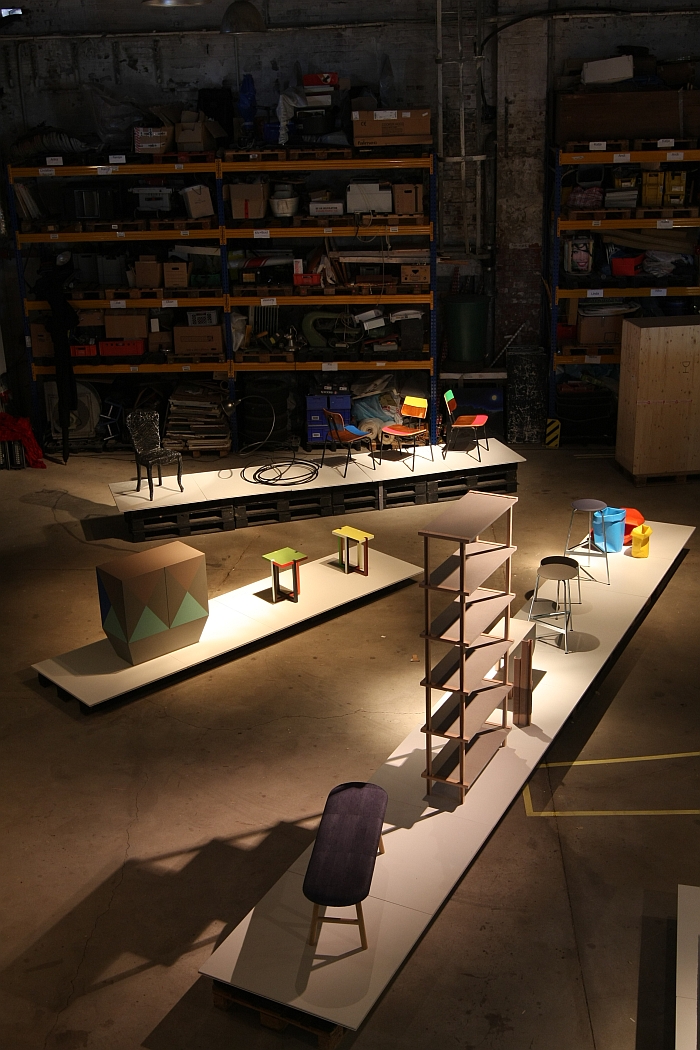
In addition to KAOS Oberschöneweide is also home to Atelier Haussmann, one of the more charming and personable design manufacturers in Berlin, one who have been based in Oberschöneweide even longer than KAOS, and one who are using the opportunity afforded by State of Design to not only present their own portfolio of metal furniture and home accessories, but also works by Berlin design talents with whom the cooperate and/or could/should/will eventually cooperate, including Zascha Petkow, Elisa Strozyk and Martin Holzapfel. And a sound system featuring the most deliciously understated loudspeakers by Jan-Peter E.R. Sonntag.
A little further down the Wilhelminenhofstrasse the Hochschule für Technik und Wirtschaft, HTW, Berlin are presenting under the title "Fundamental Questions" a number of, well fundamental questions around contemporary design and contemporary understandings of design such as, "Are we really free to move", "How do waste, work and pride relate" and "Who are we when we design together". And also a second part of Refugium.
Presented at three venues - the HTW, KAOS and Galerie erstererster in Prenzlauer Berg - Refugium. Nieuwe German Gestaltung is as previously noted a follow up to the 2013 exhibition Refugium – Berlin as a Design Principle. Whereas however Refugium 1.0 was purely Berlin focussed, for Refugium 2.0 the organisers have cast their nets a little wider and feature German designers, even if there is a very, very, very strong Berlin focus, and one Portugal based Swiss designer. And whereas admittedly not presenting the detailed background information to the product development we had expected, in comparison to the Refugium 1.0, Refugium 2.0 does thankfully include a small catalogue in which the designers, largely, explain how/from where the object arose and thus allow visitors not only to understand the background to what they are viewing, but in the majority of cases also the relevance. And by extrapolation the relevance of design.
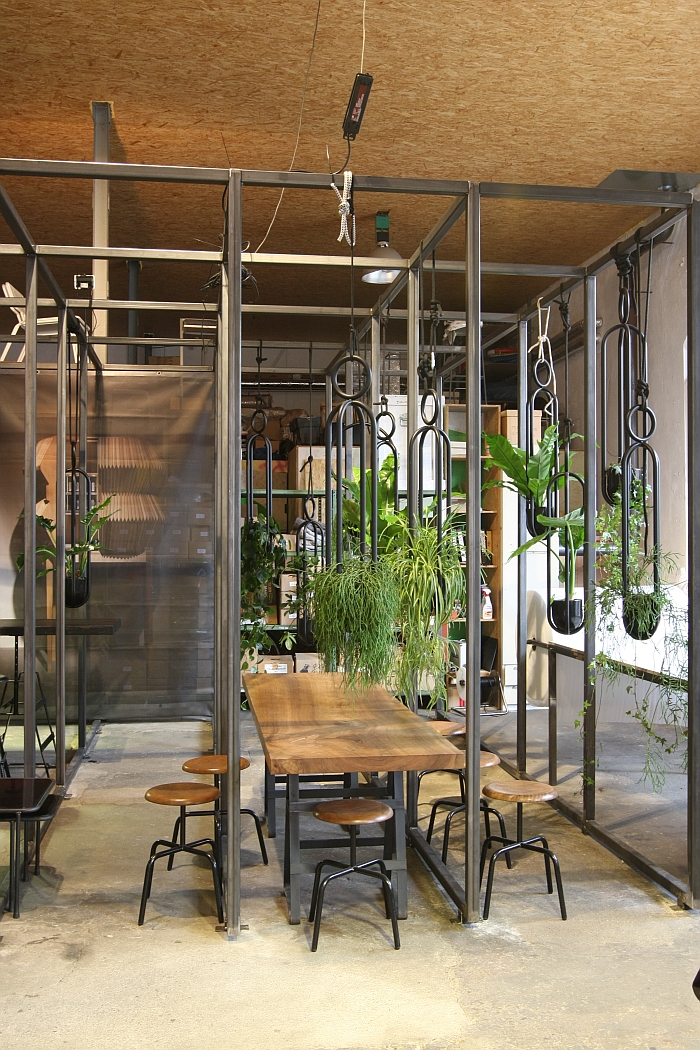
In addition to the above venues and events State of Design Berlin 2016 is also presenting events at six further venues across the city, including on Friday and Saturday a two day design conference hosted by the ICD – Institute for Cultural Diplomacy: the Friday being devoted to a discussion on Design & Violence the Saturday to films, in particular a showing of Marcus Vetter's Jenin Trilogy. One or the other party is also planned.
At the time of writing we have still haven't seen all State of Design Berlin 2016 events, nor fully studied/digested those that we have; however, based on what we have seen and digested, the festival features a very nice mix of projects old and new which present design in a wide range of guises and in forms that are both easily, instantly accessible, but also in forms that involve a lot more time, consideration and input from the viewer. And yes a few pure commercial objects, objects to which upon viewing your mind automatically adds a "Buy Me" sticker. But which altogether, as a unity, delightfully underscores that design is inescapably a social, culture and economic good and that the real challenge is to combine the three in sensible and sustainable ways. To optimise the one without negating the other two.
But what do the organisers hope visitors take with them, "That they understand a little better the process behind design," answers Alexandra Klatt, "that they experience different concepts, see that design isn't just furniture that might look nice but which I either can't afford or is impractical in my flat, but realise that design is a profession which exists very close to people, to society, and that should strive to make life easier for the likes of you and me."
State of Design Berlin 2016 runs until Sunday May 8th. Full details, including venue locations, opening times, ticket prices and details on the conference can be found at http://stateofdesign.berlin/
And for all who missed it first time round, our tallk with Max Borka ahead of State of Design Berlin.
A few impressions from State of Design Berlin 2016

